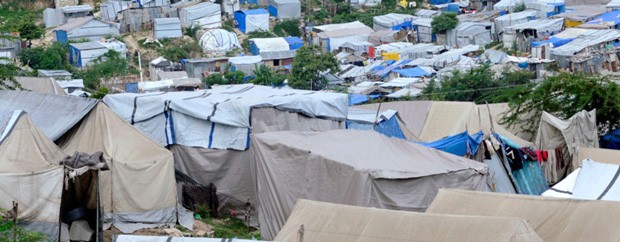Home-making post-disaster
From the Holocaust to the Cambodian Civil War to the Somali refugee crisis, the past century has been rife with mass forced migrations. According to a recent study by the UN Refugee Agency, more than 42 million people worldwide are currently displaced from their homes.
When it comes time to rebuild, these victims of home-destruction, or “domicide,” are often given only the bare essentials and told to make do. That is nowhere near enough says recent Concordia doctoral graduate Devora Neumark. In a new paper published in Housing, Theory and Society, she argues that a powerful way to overcome the traumas associated with domicide and reconstitute a sense of home is to engage in house-beautification practices.
“It can be something as simple as sweeping the kitchen floor,” says Neumark, who herself was the victim of forced dislocation when her home was destroyed by an act of arson. “The important thing is to intentionally enact practical beautification gestures that can help us feel at home despite the increasing challenges of housing instability, habitat destruction and the ruptures in relationships that often accompany these experiences.”
To arrive at this conclusion, Neumark used an art-based methodology involving more than 100 individuals who had personal or familial experience with involuntary displacement. Through public art performances and open-ended interviews, she noticed that the disorientation caused by the loss of home could be eased by the repetition of simple domestic actions. This familiarizing implicates objects, like furniture, dishes, linen, decorative items and books; their placement within the house; the patterns of their use; and the associated stories that emerge over time about them.
This research shows that choosing to embrace home beautification is one of the most telling signs of one’s capacity to determine the course of one’s life after the trauma of displacement. “Indeed, following forced displacement, making deliberate choices — and acting on the belief that one’s choices matter — are decisive elements in transitioning from victim to survivor; they are a sign of building resilience,” explains Neumark.
“The gestures of homemaking help create a sense of order so necessary in the aftermath of traumas associated with displacement,” she says. “But the ability to beautify one’s home is not a given. The role of beauty, for people whose sense of home has been ruptured or destroyed, often only becomes apparent when the most acute risks, threats and perils associated with the direct experience of having to move are no longer felt.”
Neumark hopes that her work will inspire additional research into and refugee policy changes associated with populations in more acute stages of housing crises, such as for those displaced because of Typhoon Hiyan in the Philippines. “With intensifying strife in so many places around the world, the need to identify viable ways to help rebuild is crucial to lessening the long-term and intergenerational impacts amongst the victims of displacement,” says Neumark.
About the research: This project was funded in part by the Social Sciences and Humanities Research Council of Canada; the Faculty Development Fund of Goddard College; Concordia’s Institute for Canadian Jewish Studies; Concordia’s School of Graduate Studies; and matralab, a Concordia-based research centre dedicated to interdisciplinary, intercultural, intermedia and interactive art.
